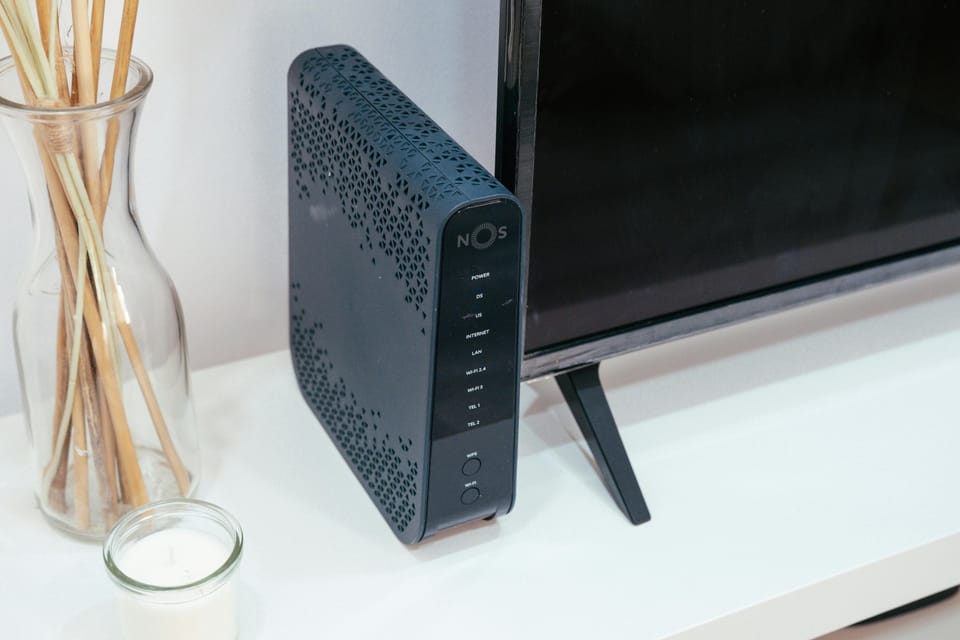Small Business Tip: Save $200+/Year by Owning Your Internet Modem (And Router)

Welcome to Angel’s Tech Blog, where I help business owners and home users get more out of their tech — without overpaying.
If you're running a small business or managing internet at home, chances are you're unknowingly paying a monthly rental fee just to use your provider’s modem.
Providers like Comcast (Xfinity) and Spectrum charge $14.99/month for home users and $17.99/month for business accounts — just to rent their gateway device.
That adds up to $180–$216 per year… every year. And, if you've been paying for internet for 10 years, that's about $2,000! But here’s the good news: You can stop renting and start saving — while upgrading your network in the process.
Stop Paying the “Convenience Tax”
Your ISP probably gave you a combo modem/router box (aka “gateway”) — and bills you monthly for it:
- $14.99/month (home) = $179.88/year
- $17.99/month (business) = $215.88/year
- Over 3 years? $540–$650+
For that much, you could buy far better networking gear — and own it outright.
❌ Why ISP Combo Devices Fall Short
Sure, the all-in-one box seems convenient — but for both home and small business use, it’s full of limitations:
🚫 Underwhelming Performance
- Limited Wi-Fi range and speed
- Can’t handle multiple users or devices smoothly
- Sluggish with video calls, cameras, or smart devices
🚫 Locked-Down Features
- No VPN support
- No VLANs for guest/staff separation
- Limited firewall and security customization
🚫 Lack of Control
- You can’t update firmware or tweak performance
- Changes often require calling your ISP
- If something breaks, you’re at their mercy
🚫 No Scalability
- Doesn’t support mesh systems or external access points
- Not suitable for growing teams or tech-heavy homes
TL;DR: You’re paying monthly for a device that slows you down.
What You Need Instead
To ditch the rental and improve performance, you’ll want to buy:
- A modem (connects to your ISP's coax line)
- A router (handles Wi-Fi, networking, and security)
Think of it this way:
Modem = door to the internet
Router = traffic cop for your devices
Recommended Modems (2025 Picks)
✅ For Comcast/Xfinity
- Motorola MB8611 (DOCSIS 3.1, 2.5GbE port)
https://amzn.to/3RZUyxt - ARRIS S33 (DOCSIS 3.1, 2.5GbE port)
https://amzn.to/4lHikvR - NETGEAR CM2000 (DOCSIS 3.1, future-proofed)
https://amzn.to/3EzSRDW
✅ For Spectrum
- ARRIS SURFboard SB8200 (reliable, dual port)
https://amzn.to/3YKL1y2 - ARRIS S34 (DOCSIS 3.1, 2.5GbE port)
https://amzn.to/3RuNclu
✅ All models work with both Comcast and Spectrum.
Don’t Forget the Router
Most standalone modems don’t include Wi-Fi or internal network features — but that’s a good thing. You now get to pick a dedicated router that actually fits your needs.
High-Performance Routers
- GL.iNet GL-MT3000 (Beryl AX) – Budget, feature packed, small homes/apartments - Wi-Fi 6, 2.5G
https://amzn.to/42tJj6M - GL.iNet GL-MT6000(Flint 2) – Great value, VPN, multi-WAN - Wi-Fi 6, 2.5G
https://amzn.to/4lJapy9 - ASUS RT-AX88U Pro– Fast Wi-Fi 6, strong security
https://amzn.to/3YLFcjV - Ubiquiti UniFi Dream Router – Pro features + remote management - Wi-Fi 6
https://amzn.to/4lHSCrb
✅ These give you more speed, reliability, and control than ISP-issued equipment.
Mesh Wi-Fi Systems (For Large Homes)
If your home or office is bigger than 2,000 sq. ft., a mesh system offers stronger coverage with no dead zones.
Budget (~$200)
- TP-Link Deco X55 (3-pack) – Easy setup, Wi-Fi 6
https://amzn.to/3YBNtHp
Mid-Tier (~$350)
- ASUS ZenWiFi AX Mini (XD4, 3-pack) – Compact + powerful
https://amzn.to/42p3Uce
Premium (~$500+)
- NETGEAR Orbi RBK853 (Tri-Band) – Top speeds, perfect for smart homes
https://amzn.to/3EocTkR
Ultra Premium (~$1,000+)
- NETGEAR Orbi 970 Series (Tri-Band) – Ultra fast speeds, ideal for power users
https://amzn.to/4jlqrwp
✅ Tri-Band routers offer the fastest speeds.
For Larger Businesses: UniFi 7 Gear
If you’re managing 25+ users, POS systems, VoIP, security cams, or VLANs — it’s time to step up to your network with UniFi.
2025 UniFi Business Hardware
- UniFi Dream Machine SE – Powerful gateway with built-in controller and PoE – https://amzn.to/3RvZ9Hy
- UniFi U7 Pro Access Point – Wi-Fi 7 for ultra-fast, high-density environments – https://amzn.to/3RvZtpK
- UniFi Switch Enterprise 24 PoE – Full-speed PoE+ switching for larger deployments – https://amzn.to/3EAbY0F
These are excellent for restaurants, co-working spaces, retail shops, or offices with more than 10 devices connected at once.
Want help planning your UniFi deployment? I can walk you through setup, VLAN design, and optimal AP placement.
How to Switch (Easy DIY Setup)
- Purchase your modem and router
- Unplug and return the ISP gateway
- Connect the modem to your coax line
- Connect your router to the modem (Ethernet)
- Activate the modem via Comcast/Spectrum portal or phone
- Configure your router (or mesh system) using its app
- Return your ISPs' equipment — and stop the rental charges
Why It Pays Off (Literally)
- Save $180–$216 every year
- Better Wi-Fi coverage and performance
- No more random outages or restarts
- Get full access to network features (VPN, QoS, VLANs)
- You own the gear — and control your setup
Final Thoughts
Whether you're running a small business, a remote team, or a smart home, replacing your rented modem/router is one of the best investments you can make in your network.
Cut the fees. Boost performance. Take control.
And while you're upgrading your setup, it's also worth thinking about backup internet. Even the most reliable providers can have outages, and a short disruption could impact calls, sales, or client communication. A smart move? Consider signing up for a second, lower-cost plan from a different ISP than your primary one. That way, you're covered if one goes down.
Need help getting set up — or figuring out which second provider makes sense in your area? Contact me below, and I’ll help you get signed up and configured.
Check out the gear listed above (affiliate links help support this blog 💖) and start saving today.
Until next time,
— Angel
ASerrano312.com / [email protected]



Comments ()